"That's why I enjoy taking myself out of my own element, my own comfort zone, and hurling myself out into the unknown. Because it's during those scary moments, those unsure steps taken, that I am able to see that I'm like a comet hitting a new atmosphere: suddenly I illuminate magnificently and fire dusts begin to fall off of me... I'm a shooting star. A meteor shower. But I'm not going to die out. I guess I'm more like a comet then. I'm just going to keep on coming back." -C. JoyBell C.
Here in the Solar System, meteor showers are one of the things we take for granted on Earth. In particular, the Perseids is peaking in just a few weeks. The most reliable shower year after year, spectacular streaks of light illuminate the night sky. Over a period of many hours, it's not uncommon for hundreds of meteors to delight skywatchers on a moonless night.
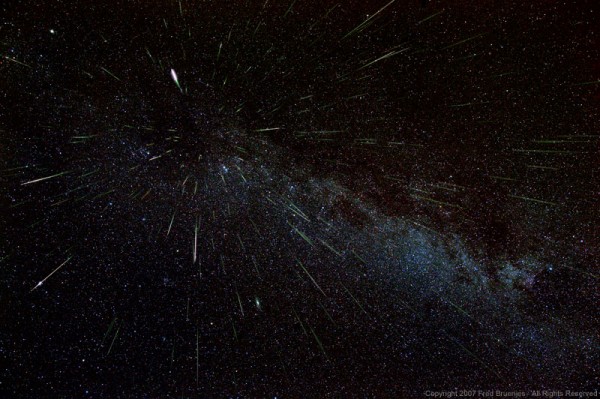 Image credit: Fred Bruenjeis of http://www.moonglow.net/.
Image credit: Fred Bruenjeis of http://www.moonglow.net/.
A single point in the sky -- just below the famed "W" in the constellation of Cassiopeia -- is where all the Perseid meteors seem to emanate from. Although this one particular point is unique to the Perseids...
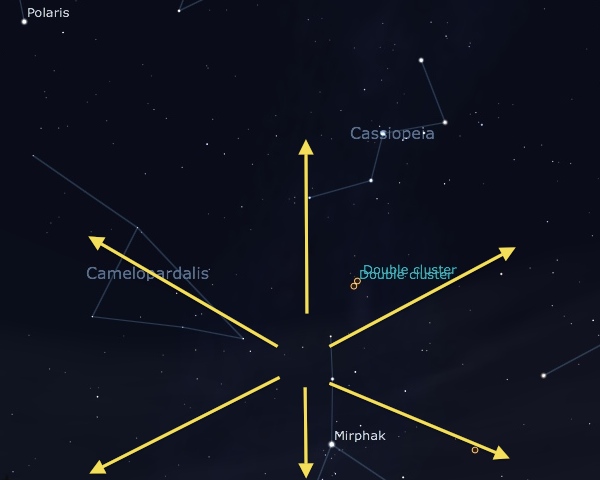 Image credit: created by me using Stellarium, available free at http://stellarium.org/.
Image credit: created by me using Stellarium, available free at http://stellarium.org/.
...each meteor shower of the year has its own unique point-of-origin.
Often called shooting stars or falling stars, these bright flashes of light aren't stars at all. Rather, a small piece of space debris -- usually a minuscule rock known as a meteoroid -- smacks into the Earth's atmosphere at a fantastic speed, somewhere in excess of 20,000 meters-per-second, or around 40,000 mph.
When we think of rocks in space, we normally think of giant asteroids, capable of leaving humongous craters on Earth, or even doing something catastrophic, like wiping out the dinosaurs. But when it comes to meteor showers, nothing could be further from the truth. The only thing meteor showers have in common with asteroids is that they're only created when asteroids or comets -- ice-and-rock rich bodies from the Solar System far beyond Earth -- venture into our neck of the woods!
In the case of the Perseids, it's Comet Swift-Tuttle, a periodic comet that swings by every 133 years, that's the culprit. When a comet (or asteroid) swings too close to the Sun, the radiation from the Sun causes some of the ices to melt, creating the spectacular and characteristic comet tails that have delighted skywatchers since the dawn of humanity.
In fact, you might think that these tails would leave a "ring" of debris after enough passes, something that perhaps the Earth would pass through, creating these meteor showers.
If that's what you think, you're partially right. Comets (and asteroids) that swing close by the Sun do develop tails, they do leave rings of debris scattered along their orbital path, and when the Earth passes through that debris, that is, in fact, what creates meteor showers.
So you got that part right.
And if you take the right astrophoto at the right time, you just might find a Perseid streaking by the Andromeda galaxy, which lies very close to the origin point of the Perseids in our night sky.
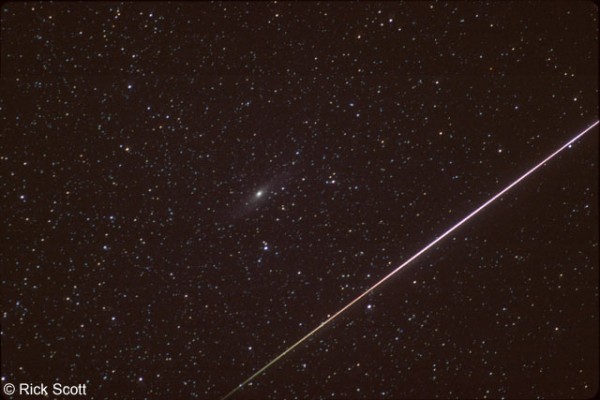 Image credit: Rick Scott's Natural Images, via http://naturalimagesgallery.com/.
Image credit: Rick Scott's Natural Images, via http://naturalimagesgallery.com/.
The vast majority of the shooting stars you see during a meteor shower aren't from rocks, or even pebbles. Are you thinking more like a grain-of-sand? That's still way too big! These great fireballs that often streak for hundreds of miles across the sky? They come from meteoroids about the size of a single dust mote.
That's right, each streak of light that happens during a meteor shower comes from about a microgram's worth of material striking the atmosphere. Think that's too little? Remember, the energy that something has might be directly proportional to its mass, but it's also proportional to its velocity squared. A microgram might be a tiny, tiny amount for a mass, but 40,000+ mph squared more than makes up for it!
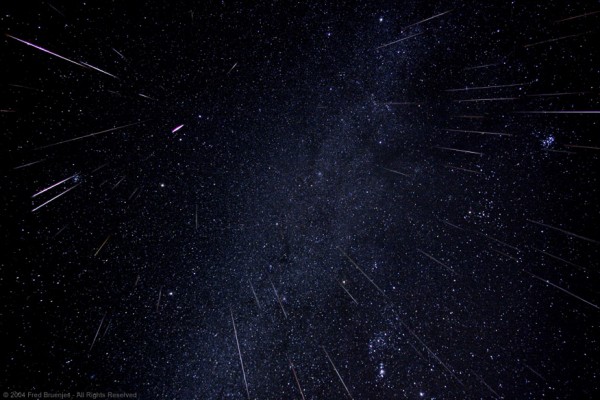 Image credit: Fred Bruenjeis of http://www.moonglow.net/.
Image credit: Fred Bruenjeis of http://www.moonglow.net/.
They all have their origin from space, which -- believe it or not -- we've actually photographed!
But there was a part you got wrong: the comet's tails don't have anything at all to do with the meteor showers you see.
In fact, comets can have -- from our point of view -- up to three tails!
There's the ion tail, which you can see in blue. This tail always points directly away from the Sun, and is made of ionized gas. Because it's ionized, it's strongly affected by the Solar Wind, and the Sun's magnetic field. It's called the ion tail because the light it emits is due to its ionization.
There's also the dust tail, which is more diffuse and in white, above. Shining in reflected sunlight, this is, in fact, made up of tiny micrometeoroids. Unfortunately, this doesn't leave a trail in the orbit of the comet, but rather in a curved path away from its elliptical orbit!
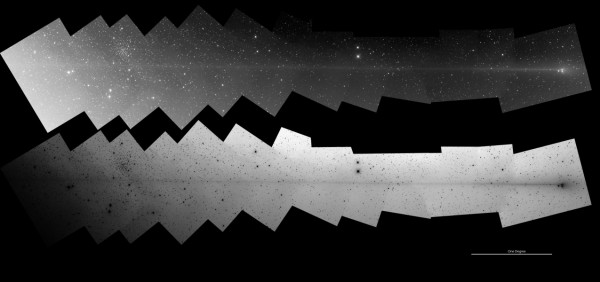 Image credit: Pete Lawrence (Digital-Astronomy), of http://www.digitalsky.org.uk/.
Image credit: Pete Lawrence (Digital-Astronomy), of http://www.digitalsky.org.uk/.
There's also, sometimes, an antitail, which looks like it trails behind the comet as seen from Earth.
Could this be the culprit in creating our meteor showers?
Not quite. This is just a trick of perspective: as a comet moves away from the Sun, its curved dust tail suddenly seems to lag behind the comet, creating an anti-tail from our point of view. In reality, this antitail is even farther out in the orbit than the normal tail of the comet.
It's none of these three tails that explain where our meteor showers come from. They all result in particles that are much more diffuse, and that aren't concentrated in a ring along the comet's orbital path.
Instead, when comets (or asteroids) pass too close to a massive body (like the Sun) or get too hot (like, from the Sun), they tend to break up. It might only be by a little bit, it might just be a tiny chunk here-or-there that breaks off. But when that happens, there will be a slew of tiny particles that come off -- some a little faster, some a little slower -- that, over enough time and enough orbits, can create that ring of micrometeoroids we know must exist.
The Spitzer Space Telescope, ideal for viewing infrared dust, captures this line of debris that traces out a comet's orbit beautifully! And whenever the Earth, hurtling furiously through space in its neverending race-around-the-Sun, passes through that trail of debris, that's when we get a meteor shower!
Of course, we're not even the only planet that gets one, check out this image, of the first meteor ever photographed on Mars, courtesy of the now-defunct Spirit rover!
And the best part? Pretty much every planet in every Solar System should have these!
And that's where meteor showers come from. The next time you see a shooting star, remember exactly what you're looking at: comet dust from broken-apart fragments that have spread out millions of miles throughout space, no bigger than a microgram in size, colliding into our atmosphere at tens of thousands of miles-per-hour, just to deliver a momentary flash of light as they burn up! That's what a meteor shower is.

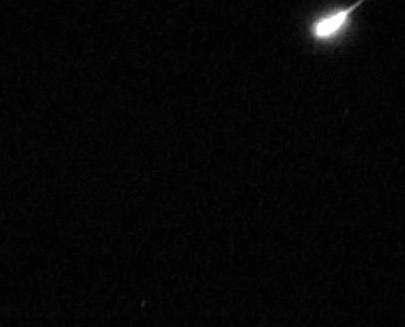

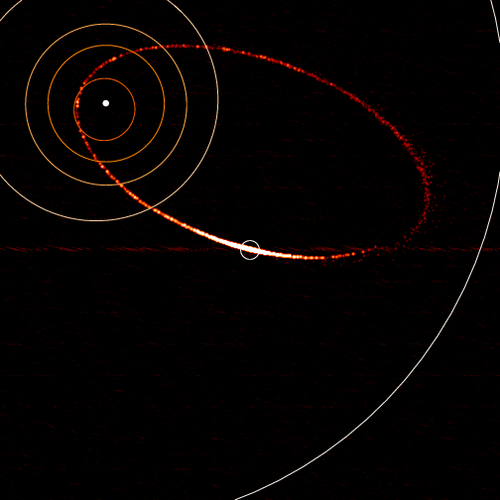
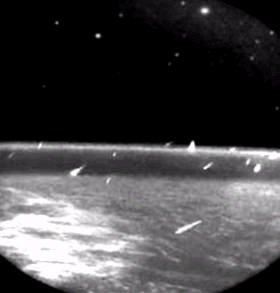
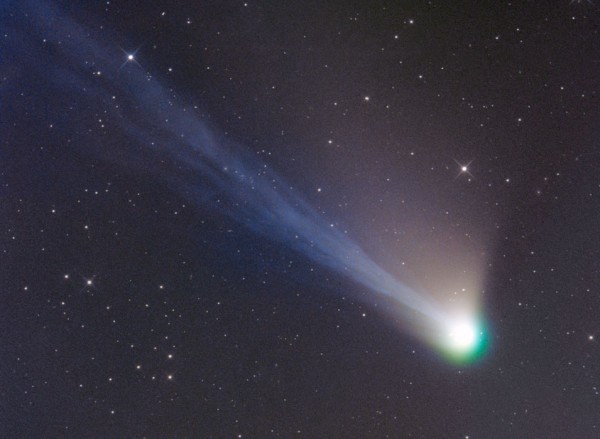
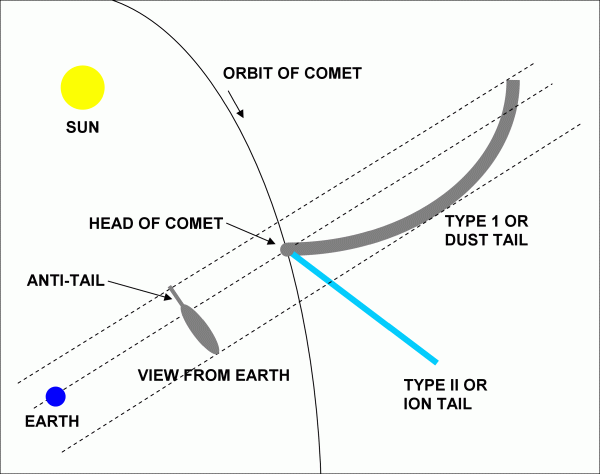
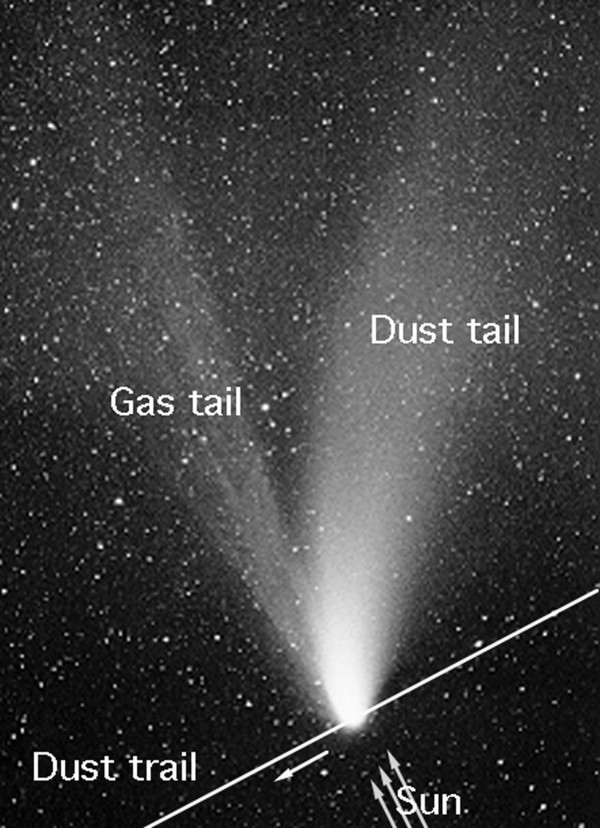
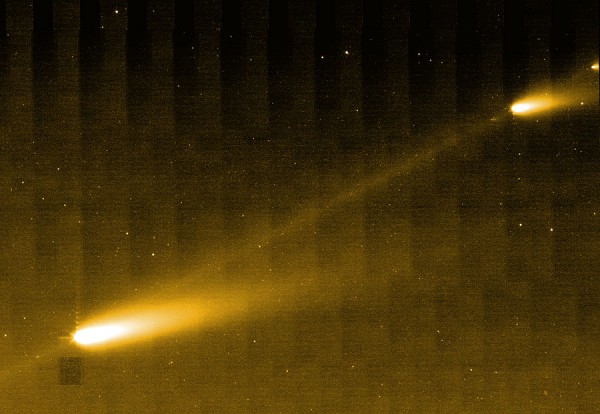
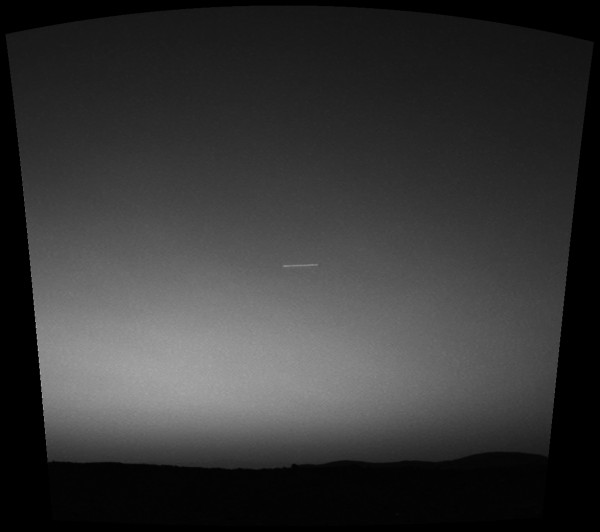
Ethan, Nice article, but I can't understand how one-microgram dust motes could create " great fireballs that often streak for hundreds of miles across the sky". At 20 km/sec, the particles would have the energy of about 50 micrograms of TNT exploding. That is 1 / 20,000,000,000 of a ton of explosive. That's tiny even compared to a little firecracker. How could that make a long, brilliant streak??
1microgram@20,000km/s equals 400,000 joules. According to Wikipedia, 1 gram of TNT = 4184J (exactly). So that micrometeor would be equal in energy to 100gm of TNT, or roughly half a stick of dynamite.
Another way to think of it would be a 1 megawatt lightbulb shining for a quarter second, which seems reasonable.
The article says 20,000 m/s, which is 20km/s or 44,000 miles per hour, which agrees with what Wikipedia says is the average velocity of meteroids with an upper velocity of 42 km/s. 1 ug at 20 km/s has an energy of 0.2 J. So yeah, I don't think that checks out.
20,000 km/s would be over 5% the speed of light. Don't think comet debris are going that fast. :P
Woops. Thanks for checking my math CB, though I think you're off by a factor of two.
A brief flash of a 1 watt lightbulb wouldn't cut it. The Luxor Skybeam is about 250kW, which 1gram would produce for about 1 second.
I could believe that a grain of sand (1-10mg) would be visible, but not something in the microgram range.
On which, the KE? I'm pretty certain that's correct. Don't forget there's a 1/2 in front of the mv^2. :)
Wikipedia states that most meteors are the result of "pebbles' which it further defines as being 4mm to 64mm in "size" (presumably diameter). Working on a density of around 5 grams per cm^3 this gives masses from around 1/10th g to 600g, and at 20km per sec, this would give between about 30kJ and 100MJ of KE - quite enough to put on a nice visual display on a dark night, even if 90km away.
CB,
Something in your math just doesn't pass the smell test. 20000 m/s = 2x10^4. Squared that is 4x10^8. Multiply by 1x10^-6 gives 4x10^2 or 400. Multiplying by 1/2 gives 200J. Did you mean 0.2 kJ instead of 0.2J perhaps?
Nope, 0.2 J. Remember that in SI units the kg is the basic unit of mass, not the g. The Joule is equivalent to kg * m^2/s^2.
So a ug is 1*10^-8 kg. Plug that in and you'll see it works out.
Or just ask Wolfram Alpha "kinetic energy of 1 ug at 20000 m/s" if you don't believe me. :)
Ugh, typos. I meant a ug is 1E-9.
you are all doing the calculation for tiny particles. Now do the calculation and consider a meteorite of 100 m in diameter or 1000 meters, I read, think it was Bill Bryson's "A short History..." that the former kills 60% of life and the latter sterilizes the planet.
CB,
Thanks, you are of course correct. Can't believe I messed that one up; must be a bad math day for me :)
Yeah the point was to see if the fireballs occasionally seen could be the result of microgram dust motes. Probably not.
I could do those calculations but I need a mass. I don't think that's quite right though since the Chicxulub impactor that is believed to be the impetus for the KT extinction is estimated at 10km in diameter and the planet was hardly sterilized. 100m impactors hit the earth every few thousand years on average.
Anyway, let's assume a spherical impactor 100m in diameter made of iron/nickel with a density of 7g/cm^3 at our "typical" 20km/s. That's ~ 7E17 J or approx. 170 MT of TNT. Big, but no way do 3 Tsar Bombs wipe out 60% of life on earth.
Was just up in the Colorado mountains, doing a little night photography as the moon was rising, and managed to catch a fireball:
http://www.flickr.com/photos/15913354@N00/9404290531/
You can imagine the thrill when I found out that the fireball was actually in the field of view. And then I return to find that Ethan has posted about meteors!
Nice!
Well, the explosions won't be lasting 3 seconds. What you need is something with enough structure for it to notice when it fails. A ball of gravel held together with a fusion of materials that will boil off then allow all the component parts to separate and get their own interaction with the atmosphere would produce a fireball with very little mass compared to the simplistic calculation of "How many MJ does that have when vapourised".
We're just calculating the energy as an upper bound sanity check. If there's not enough energy for a fireball there's not, and how it gets released is immaterial. So the real question is what is the extra source of energy aside from KE? Combustion reactions?